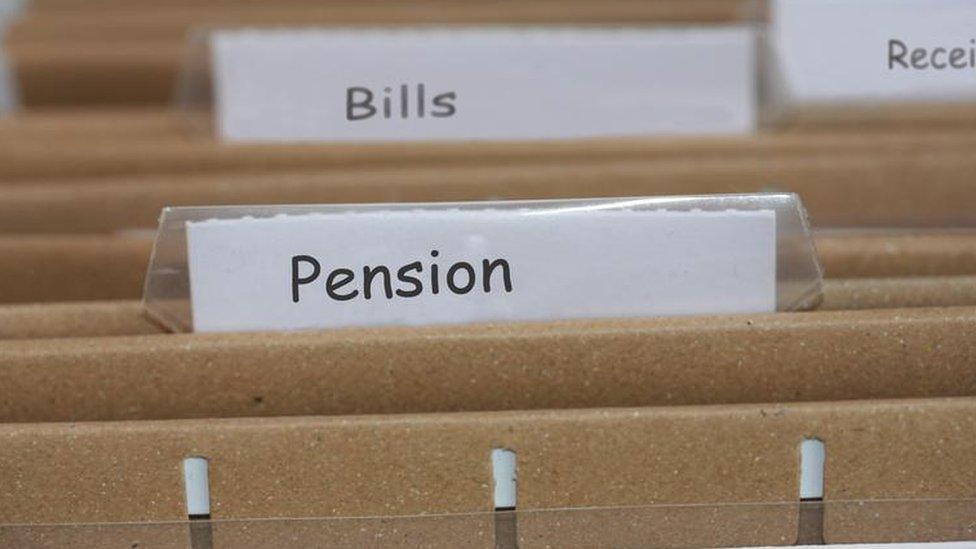Six million save automatically for pension
- Published

Adverts featuring a 10ft hairy monster were used to raise employer awareness
More than six million workers have now been signed up automatically to a pension savings scheme but fears remain over how much is being set aside.
The latest stage of the government's auto-enrolment programme, external has seen a 95% compliance rate among small businesses.
All employers will eventually need to offer pensions to anyone who is over the age of 22 and who earns more than £10,000 a year.
The introduction is a gradual process with 66% of employees now signed up.
The latter stages are widely seen as the most challenging as employees such as nannies, care workers, plumbers and bar staff are enrolled into a pension.
This means employers who only have one or two staff may need to add a pensions policy to their pay and conditions. This group represents more than a third of those who will be required to comply with the rules from now.
Employees have the option to opt out of saving.

The auto-enrolment system was started in 2012, and aimed to ensure that workers save to enable them to top-up their state pension on retirement. This has reversed falls in workplace pension saving.
The full roll-out is taking years to complete, but MPs and regulators have welcomed a successful take-up by workers and compliance by employers - both of whom pay into the pension pot.
"The compliance rates achieved have been consistently at the top of our expectations and the savings landscape has been transformed. But we know the job is not yet done and there are still significant challenges ahead," said Charles Counsell, executive director for automatic enrolment at the Pensions Regulator.
'Woefully inadequate'
Those challenges include a question over whether enough is being put into these pension pots. There is concern that some workers may feel that the pensions box has been ticked, only later to find that their pension does not offer them the standard of living they are expecting.
New figures from the Pensions Regulator show that the average contribution from employers is 3% a year of an employee's salary.
Steve Webb, now director of policy at Royal London insurance company, was pensions minister when the system was created. He said such contribution rates were "woefully inadequate to provide a decent retirement".
"The fact that the average employer contribution rate among firms so far is just 3% shows the mountain that we have to climb," he said.
"Getting the combined rate of contributions from employers and employees to realistic levels as quickly as possible should be the central focus of the 2017 review of automatic enrolment. Without this, millions of workers in generations to come will simply be unable to afford to retire."
Minimum contribution rates will increase from 2% to 5% in April 2018, and from 5% to 8% in April 2019.
A spokeswoman for the Department for Work and Pensions, said: "We want to make it as easy as possible for businesses to manage automatic enrolment which is why we made the decision to gradually increase the amount employers contribute to workplace pensions. We also know that people will need to save more and we will be considering how to get people to do this as part of our 2017 review."
Concerns also remain about certain trusts that administer these pensions for small firms, as revealed by a BBC investigation.